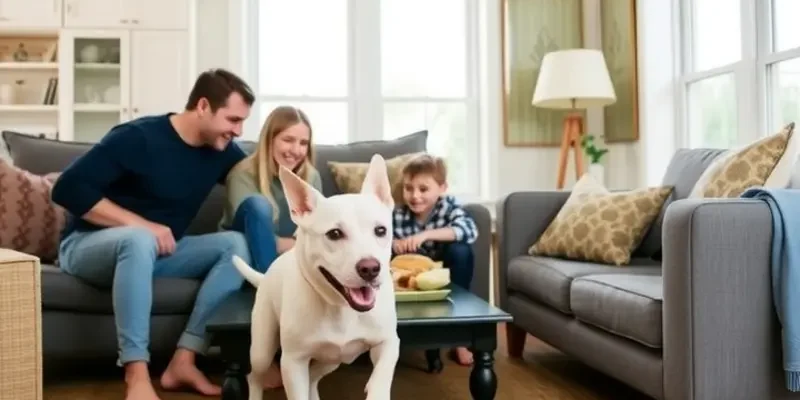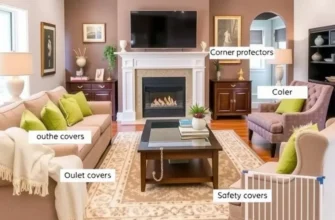Finding the perfect apartment that accommodates both your family and your pets can be a daunting task. As awareness of the importance of pets in family life grows, so does the need for pet-friendly housing options. While many landlords are recognizing the growing demand for pet-friendly apartments, they often implement pet fees, which can vary widely from one lease to another. These fees can range from non-refundable deposits to monthly surcharges, creating an intricate puzzle for families and couples seeking a safe and comfortable living environment for their children and pets alike. Understanding what these fees entail and how to navigate them is crucial in ensuring that you secure an apartment that meets all your needs—without breaking the bank. In the following chapters, we’ll explore typical pet rental fees, how to negotiate them, and tips for finding child-friendly apartments that welcome your furry family members.
Decoding Pet Fees: What to Expect

Deciphering the complexities of pet fees in apartment rentals is crucial when navigating your potential new home. These fees can vary greatly in structure and amount, but they typically fall into a few distinct categories. Understanding these categories helps in budget planning and avoids unexpected costs.
Non-Refundable Pet Deposits
One of the most common charges you’ll encounter is the non-refundable pet deposit. Unlike a standard security deposit, this fee is intended to cover potential wear and tear caused by your pet. This can include damage to carpets, flooring, or walls, as well as additional cleaning. On average, these fees range from $200 to $500, depending on the apartment and location. It’s essential to recognize that you won’t recoup this cost at the end of your lease. Always check if the conditions and extent of coverage for this deposit vary between apartments.
Monthly Pet Rent
Monthly pet rents are becoming more common, especially in urban areas. It’s an extra charge added to your rent every month for the privilege of having a pet in your apartment. On average, this fee ranges from $10 to $50 per pet per month. Pet rents often contribute to additional insurance and maintenance costs incurred by the landlord. While seemingly small, these recurring costs can add up over time, so consider them in your overall rental budget.
Refundable Pet Deposits
Less common but still possible, some apartment complexes may require a refundable pet deposit. This functions similarly to a standard security deposit, where the funds may be returned once you vacate and a satisfactory property inspection is completed. These deposits often range from $200 to $300. With refundable deposits, clearly document any pre-existing issues in the apartment to ensure you receive your refund.
Factors Influencing Pet Fees
Various elements influence these fees, such as the type and size of your pet and the apartment’s pet policy. For example, larger dogs might attract higher fees compared to cats or smaller pets due to perceived higher risk of damage. Moreover, the presence of multiple pets typically compounds the fee structure, further highlighting the necessity for thorough policy examination.
Understanding the details of an apartment’s pet policy is indispensable. These policies touch upon breed restrictions or limits on the number of animals allowed. Additionally, weigh the benefits of ensuring your pet’s comfort and safety. For a more comprehensive take on designing spaces with pets in mind, consider exploring pet-friendly indoor activities, which can be a valuable resource.
When apartment hunting, it’s vital to familiarize yourself with all possible charges and negotiate where possible. Inquire with property managers about the possibility of waiving or reducing fees, especially if you have an excellent rental or credit history. This proactive approach in understanding and managing pet fees sets a realistic budget and ensures a smooth transition to your new pet-friendly home.
Finding the Right Apartment: Tips for Families

Searching for a family-friendly apartment that accommodates both children and pets can feel overwhelming. However, by leveraging technology and adopting a strategic approach, you can find a rental that aligns with your needs and budget.
Begin your search on apartment hunting websites by applying specific filters. Look for options that allow pets and offer amenities like nearby play areas or fenced yards. Use search terms like “playground,” “pet area,” or “dog park,” which signal family-focused facilities. Additionally, consider listings that advertise flexible layouts. These can accommodate changes in family dynamics as your needs evolve.
Once you’ve shortlisted potential apartments, reaching out to property managers is crucial. Establishing a connection with them can provide insights beyond what’s listed on websites. When you inquire, ask detailed questions about pet policies, such as the types and sizes of pets allowed and any breed restrictions. Inquire if there are specific pet fees and what those might cover, ensuring you understand any additional monthly costs beforehand.
The application process is an ideal time to demonstrate your responsibility as both tenants and pet owners. Prepare a pet resume, detailing your pet’s age, breed, training, and vaccination history. Personal references from previous landlords attesting to your pet’s good behavior can make a strong impression. Moreover, having these documents ready can expedite your application process and distinguish you from other potential renters.
When it comes to rental negotiations, leverage your knowledge of the local market. Research similar properties in the area and use this information to negotiate rent or pet fees, particularly if your target apartment lacks pet-focused amenities. If pet fees are fixed, consider negotiating the deposit or requesting added perks like pet-sitting services or waived move-in costs.
Budgeting for additional pet costs is essential. Factor in pet rent, cleaning fees, or potential damage deposits when considering your budget. A comprehensive financial plan is key to avoiding unexpected expenses, especially if you’re exploring options such as financial planning for renters.
Finally, prioritize apartments that foster a safe environment for your family and pets. Check for potential hazards like busy roads or unfenced ponds. Adequate indoor and outdoor spaces contribute to both children’s and pets’ well-being. Consider aspects like the availability of a dedicated pet play area or secure balconies that can prevent accidents.
By applying these strategies, your family can enjoy an apartment that welcomes furry companions without compromising on comfort or financial stability. Being informed and prepared ensures that you’ll find a place you and your pets can genuinely call home.
Final words
Finding a comfortable apartment that is also pet-friendly can lead to a happy living environment for your whole family. With the right information and strategies, you can navigate the complexities of rental pet fees and successfully find a home that accommodates both your children and your furry companions. Remember that being informed about the details of pet fees and knowing what to expect during your search will empower you to make the best decisions for your family. With patience and persistence, your perfect home awaits!









